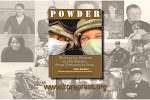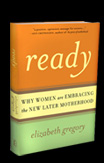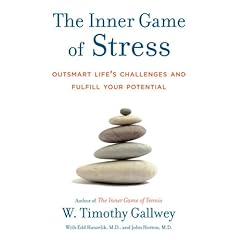







“The future will be gorgeous and reckless, and words, those luminous charms, will set us free again.” This dazzling quote by Carole Maso serves as the epigraph to Powder: Writing by Women in the Ranks, from Vietnam to Iraq, and reflects one of the book’s central intentions — the power of using words to cast light on often dark subjects. The phrase is also a motto of sorts for Kore Press, a literary press in Tucson, AZ deeply committed to publishing and promoting women authors. At a time when lack of attention to female authors is a justifiably hot topic this book and Kore’s mission is as vital as ever.
The word “powder” evokes a range of nuances — face powder, baby powder, gun powder, the powdery sand of the desert, the rubbled powder left by a blast. As the editors point out, the word “POW” also lurks within. This moving and deeply original collection is shadowed by the thought that any powder’s fine particles indicate disintegration. The contributors have sifted through the remains of their experiences to find the precious grains within. Powder offers rare insight into the lives of women in the military, acutely highlighting the tensions between speaking and silence, being female in a heavily masculinized realm, the fraught desire to serve one’s country while often marginalized by the very institution to which these women want to be loyal.
Admirably far-ranging in locations, time frames, and wars represented, the book’s rawest power comes from hearing the women’s voices in concert. Unusual within the genre of anthology, instead of a brief bio at the book’s end, each contributor receives a full page with a photo and a paragraph explaining her motivation for joining the military, what she gained or lost, and answers if she would serve again. In correspondence with her creative work, these mini-autobiographies highlight the contrast between civilian and solider selves, revealing a compellingly reflective aftermath. Some recount horrors experienced, some moments of unexpected tenderness, some furor at the injustice they saw. Dr. Donna Dean writes of enlisting before Vietnam when the only jobs open to women seemed “killingly boring” and her now unrelenting PTSD. Some express motivation to use writing for therapeutic purposes and several have impressive MFA degrees.
The writing is viscerally felt, and has been receiving great attention, as contributors describe wartime horrors, both large and small, often what it is like to feel powerful then powerless in quick succession as they reveal the stringencies and rigor of the military, its entrenched sexism and often disdain for woman within its system. The book’s glossary decodes that “WM” stands for Women Marines, but more than one story reveals this is popularly defined as “Whatta Mistake” or “Wasted Money.” The tension between the obedience the military demands and the need to give voice to personal witness is strong.
In the brief chapter “Enemy in the Ranks” Christy L. Clothier gives a harrowing account of attempted rape, along with subsequent trial and the anguishing resistance to prosecution she encounters. Her piece ends with her poignant recollection of her second day of basic training and how empowering it felt to scream, particularly after surviving domestic abuse as a military wife when she had learned “never to yell.” She writes, “it was the first time I had heard my voice sound strong.” Her story is followed by the poem “Yes, Sir!” in which Elizabeth Keough McDonald writes about the uncomfortable feeling of being the only woman in a group enduring a sexual joke and consequent abuses of power.









 Just a quick shout out to a number of authors with FANTABULOUS feminist books out this fall. Congrats, admiration, and heartfelt kudos to:
Just a quick shout out to a number of authors with FANTABULOUS feminist books out this fall. Congrats, admiration, and heartfelt kudos to: If I could think of a topic that travels around the conversations of most women I know, the choice to have a child, and when, often lives pretty near the top of the list. Following it comes a litany of concerns: how to juggle career, partnerhood, personal and professional ambitions, and more.Â
If I could think of a topic that travels around the conversations of most women I know, the choice to have a child, and when, often lives pretty near the top of the list. Following it comes a litany of concerns: how to juggle career, partnerhood, personal and professional ambitions, and more. 
